Oh, the classic carbonara. Generally speaking, carbonara is a Roman dish consisting of pasta drenched in an egg-based sauce studded with bits of guanciale (cured pork jowl) and seasoned with savoury Pecorino Romano cheese and piquant black pepper. The indulgent dish has become synonymous with Rome, and no trip to the Italian capital is complete without a visit to a trattoria to twirl spaghetti alla carbonara around your fork. It’s a gastronomic traveller’s rite of passage that seems as historic and entrenched as a trip to the Colosseum.
To give a bit of background: Like many of Rome’s culinary classics, carbonara is a 20th-century invention, and its origins are elusive. First accounts of carbonara in Rome surface in the late 1950s and early 1960s, at which time local cooks scoffed at the invention. Chef Arcangelo Dandini recounts, “My grandmother had a trattoria and prepared all the classics. For her, carbonara was too new to qualify!”
Urban legends about the dish claim that American soldiers invented it after World War II, mixing their bacon rations with powdered eggs. Other myths give the credit to carbonari (charcoal makers), while others argue the dish was invented in Naples and named for a local secret society, the carboneria. These are fun stories, but hard to prove. Another, more plausible theory is that in the post-war era, Roman chefs were seeking to enrich their local classics to reflect the booming economy. By adding egg to spaghetti alla gricia (a pasta made with cured pork jowl, Pecorino Romano and black pepper), cooks could create a new dish that was both rooted in local flavours and a mirror of Roman decadence.
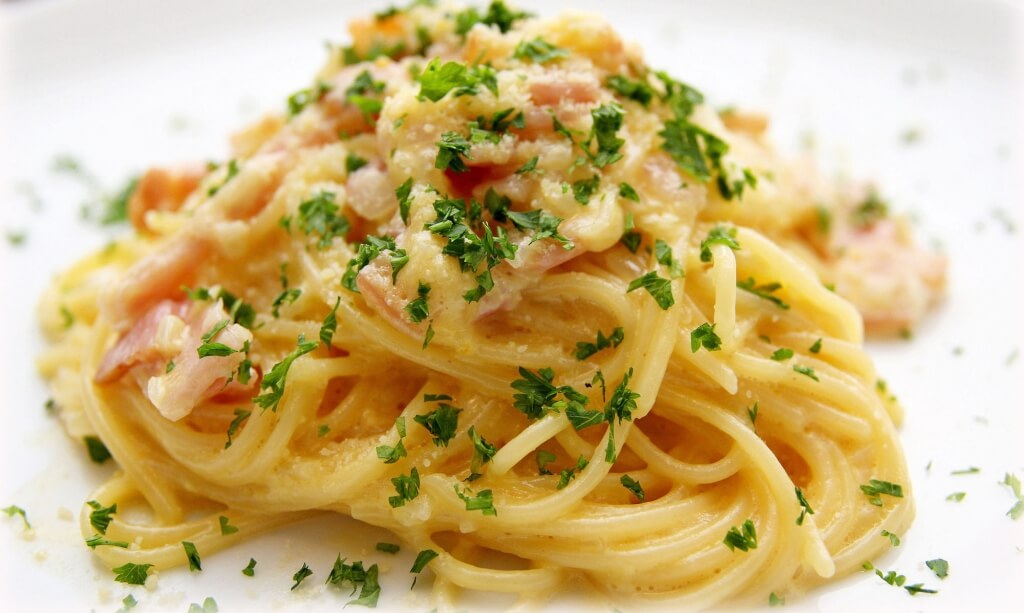
Whatever its provenance, carbonara is a classic and delicious dish, but home chefs beware: if you want to make it like a true Roman, there are a few things to keep in mind.
The Pasta
In Roman and other regional cuisines, the custom of pairing shapes and sauces has become a borderline science. Although the most common pasta shape paired with carbonara is spaghetti, many cooks use ridged tubular pasta like rigatoni or mezzemaniche (half rigatoni), and any of these is seen as an appropriate sauce and shape pairing to the exclusion of other forms. Regardless of the pasta shape, chefs reach for dried durum wheat pasta, which releases starch into boiling water as the pasta cooks. The cooking water can be used to temper the egg to make the final sauce.
The Eggs
Yolk-only versions of carbonara are intensely rich and just as common as the slightly lighter whole egg version. The eggs in Rome have a distinctly dark orange yolk, which imparts colour on the sauce.
The Guanciale
Cured pork jowl is a precious fat and flavour source for Roman cooks, who slice the salted meat into cubes or tiles, then render its fat, all of which is incorporated into the sauce. Some cooks use pancetta instead of guanciale, and in the absence of both, you can use bacon.
The Spice
For maximum flavour, Roman chefs use freshly milled black pepper. Theoretically you can use pre-ground pepper from a jar, to the detriment of flavour and texture.
The Cheese
Pecorino Romano is an aged, salted sheep’s milk cheese, and due to its salt content, grated Pecorino Romano becomes a seasoning source for carbonara. Some chefs use Parmigiano-Reggiano as well to balance the saltiness with a rich nutty flavour.
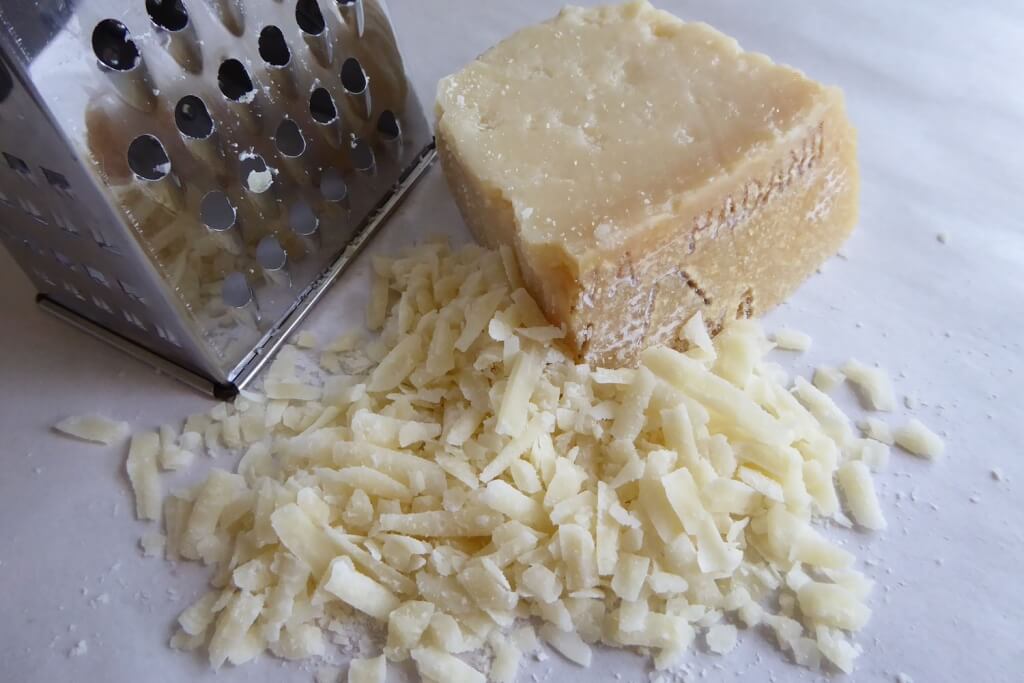
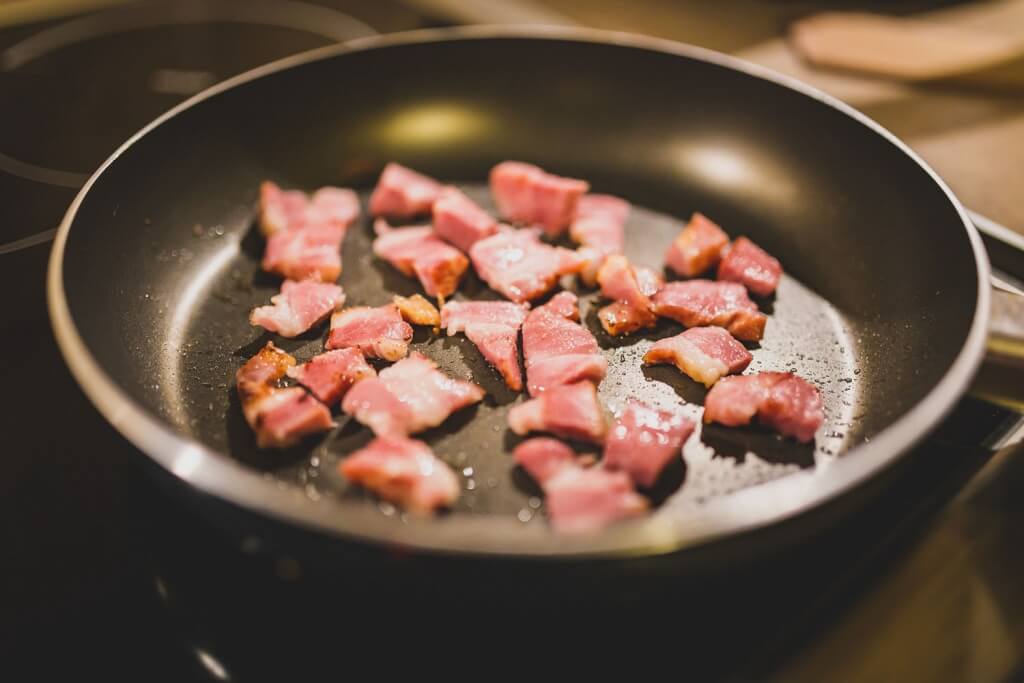
The Method
Achieving the perfect carbonara consistency – you want the sauce to be loose enough to thoroughly coat the pasta, but not too runny – takes practice. The trick to carbonara is to apply enough heat to the egg mixture to thicken it, but not enough to make the eggs scramble. Some prefer to gently heat the egg mixture in a pan (non-stick materials and pans that conduct heat evenly are best), while others add hot pasta water to the egg mixture away from the heat, mix well, then add the hot drained pasta. Some fine dining chefs in search of a silky texture utilise the so-called zabaione method, heating the egg mixture over a double boiler to cook it gingerly.
The Variations
Thanks to a recent boom in culinary innovation, new carbonara incarnations have popped up all over the city. On the home and restaurant tables of Roman Jews, guanciale is substituted with carne secca (cured salted beef). The growing number of vegetarian offerings in the city include carbonara di zucchine made with zucchini in the place of guanciale. At three Michelin-starred La Pergola, German chef Heinz Beck serves a contemporary take on the classic: small envelopes of fresh pasta are filled with an egg and Pecorino sauce, and the pasta is garnished with tiny slivers of fried guanciale. At his pizzerias Sbanco, Tonda and Sforno, Roman pizzaiolo Stefano Callegari spreads a thick carbonara sauce over his thick-rimmed pizza bases.
Taking the carbonara theme a step further, mixologist Massimo D’Addezio mixes a “Carbonara Sour”: lemon juice, egg whites and vodka, infused with rendered guanciale fat and garnished with a healthy pinch of black pepper and a pasta straw.
What’s not allowed: Carbonara cooked outside of Rome is often unrecognisable, featuring ingredients like cream, butter, peas, onions or herbs. All of these additions make purists cringe – and I would argue they all diminish the balance of a classic carbonara.
Ready to try your hand at this iconic dish? Click here for Katie’s own recipe, with the option to follow the Zabaione or pan method.
Article by Katie Parla

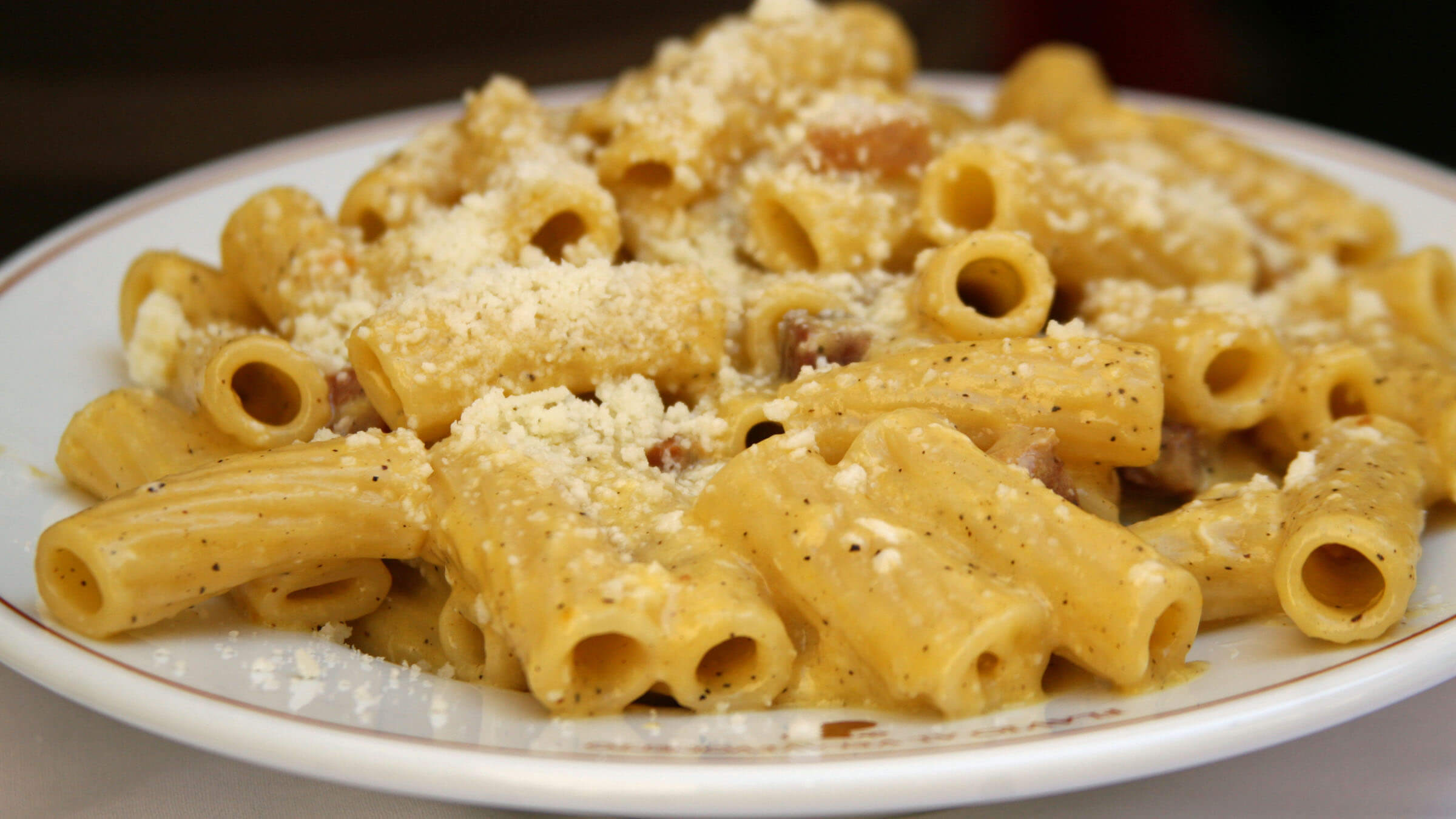










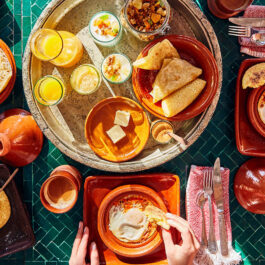

Sorry, the comment form is closed at this time.